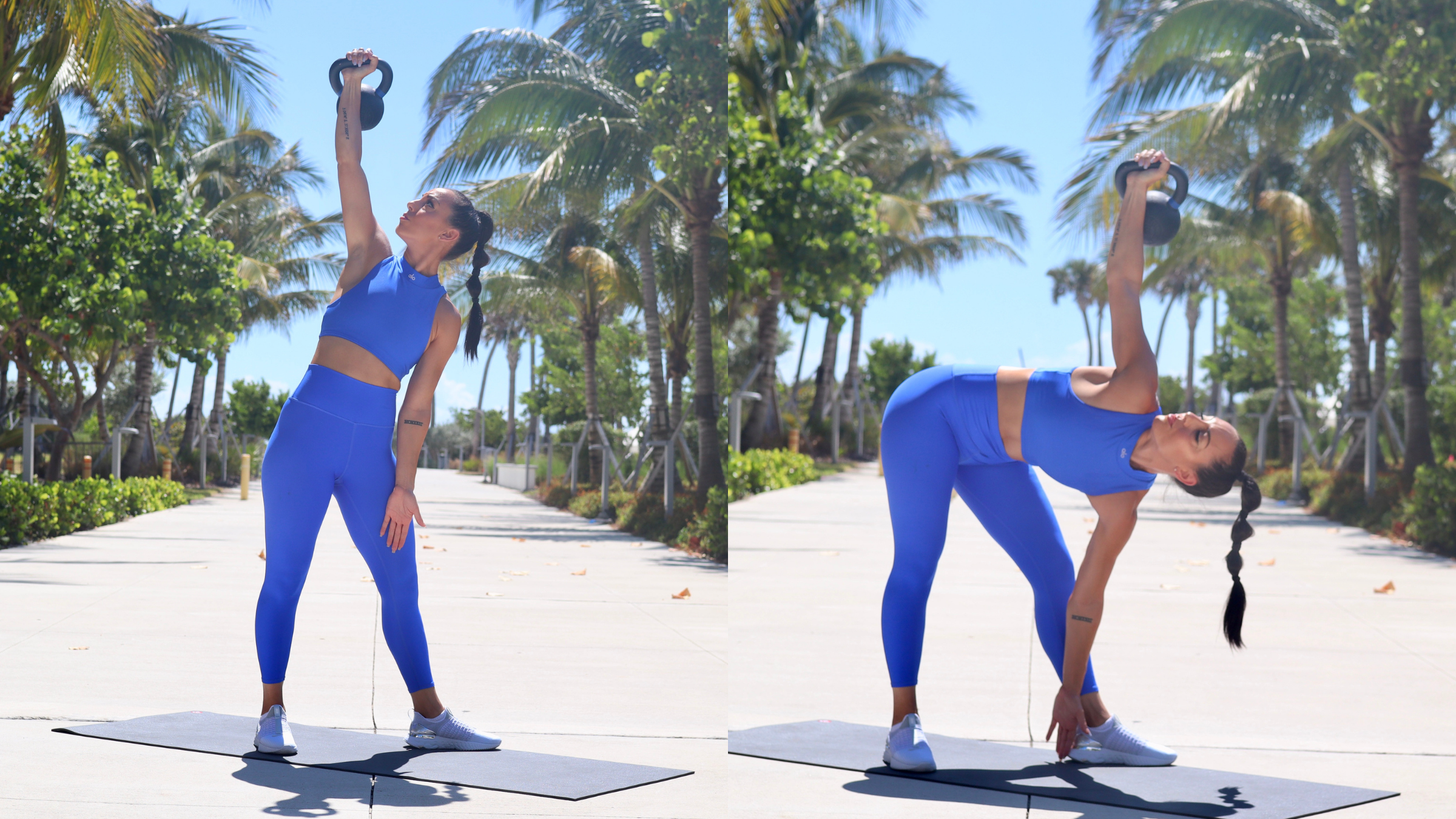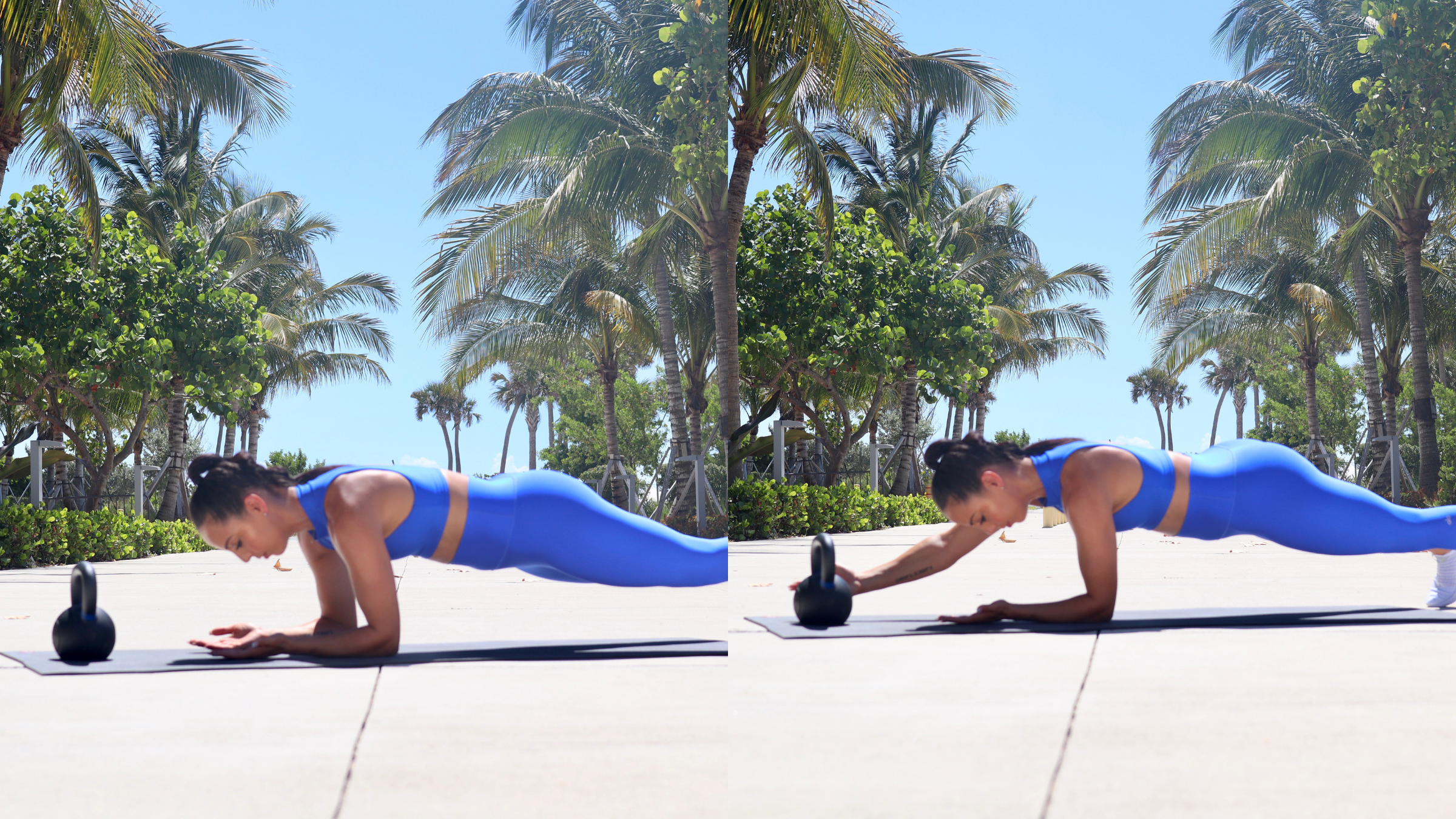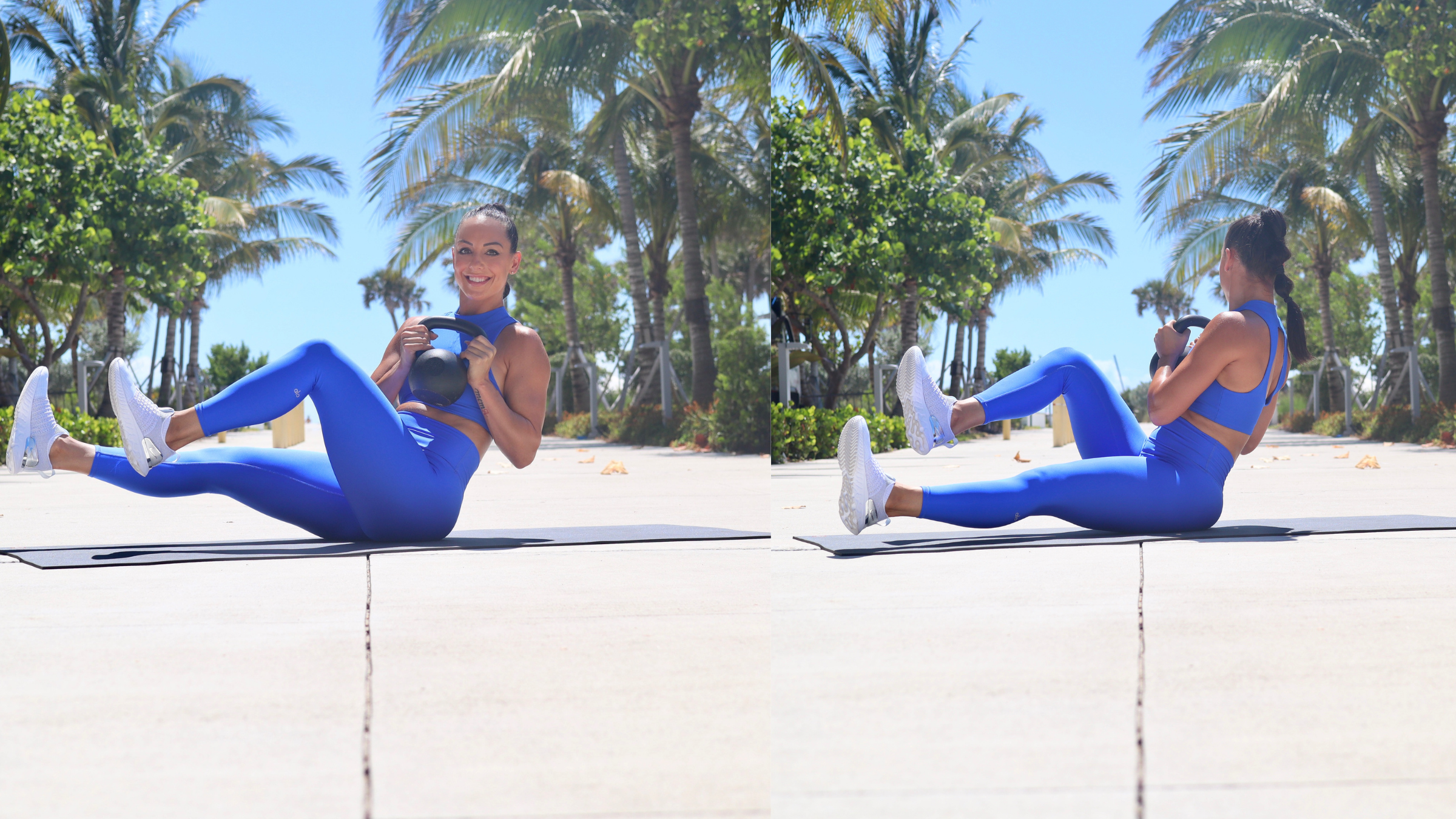The Functional Kettlebell Core Workout

(Photo: Jacqueline Kasen)
You could argue that no part of your body is more important to your body’s overall fitness and athletic performance than your core — and you’d be right.
Your abs and lower back contribute to any exercise or physical activity you undertake, serving as a “power center” for every twist, turn, lift or leap you do. The following workout, designed by Miami-based Oxygen Ambassador Jacqueline Kasen, a personal trainer and master educator for Technogym, will help ensure your “power center” packs a punch.
“In this workout, I’ve assembled five exercises that are challenging, effective and I think underutilized,” Kasen explains. “You’ll move through all three planes of motion with a kettlebell, hitting every part of the core and developing both strength and stability. That combo is important because when the core is strong, it stabilizes your body, allowing you to move in any direction while maintaining balance and control.”
Equipment Required: Just one kettlebell and an exercise mat if preferred for on-the-floor movements.
Jacqueline Kasen’s “Get JacQ’d” Core Performance Kettlebell Circuit
Perform the following five exercises as a circuit, doing 10 to 12 reps of each movement before moving on to the next exercise without rest. Rest one to two minutes between rounds.
| Exercise | Rounds | Reps |
| Windmill | 3-4 | 10-12 |
| Quarter Turkish Get-Up | 3-4 | 10-12 |
| Modified Plank With Arm Reach-Out | 3-4 | 10-12 |
| Side Plank With Knee Bend | 3-4 | 10-12 |
| Russian Twist With Knee Bend | 3-4 | 10-12 |

Windmill
How-To: Stand with your feet hip-width apart and one foot turned out so your heels form an “L” shape, holding a kettlebell overhead with that arm straight up over that shoulder. From there, shift the same-side hip out and lower your free hand toward your forward foot (the one that would represent the top of the “L”), sliding that hand down your leg while the kettlebell remains extended above you. Try to lower yourself to a point at which your torso is parallel with the ground. Hold that position briefly, then return slowly to the start. Repeat for reps for one side, then switch arms.
Jacqueline’s Pointers: “When your forward leg starts to bend, you have reached the limit of your range of motion — so at that point, reverse to return back up to the starting position. Keep your gaze fixed on the kettlebell, and slide your free hand along the inside of your leg so that hand does not deviate away from your body. This way, you remain in the same plane of motion to target your oblique rather than your lower back.”

Quarter Turkish Get-Up
How-To: Lie down flat on your back and bend your right leg, placing your right foot flat on the ground, holding a kettlebell straight up in the air with your right hand. Place your left arm off to the side on the ground at a 45-degree angle with your torso, palm flat. Now begin to sit up, keeping the kettlebell overhead as you engage your core to lift your upper body until it’s about 90 degrees to the ground. You can use your free hand to assist you as needed, getting up to your elbow and then supporting your body with your palm. At the top of the movement, the kettlebell should remain extended directly above you, keeping that elbow straight. Return to the start by reversing the motion under control, sliding your left hand diagonally behind you to ease on to your elbow and then back all the way down to the floor. Repeat for reps before switching arms.
Jacqueline’s Pointers: “The full Turkish get-up involves going all the way from the floor to standing while keeping the kettlebell fully pressed overhead. Here, you’re focusing on the very first part of the exercise, which involves sitting up — meaning you’re essentially performing a sit-up against resistance. When you’re lying down, your shoulders should be in full contact with the ground — avoid the tendency to shift the shoulder of the arm holding the weight upward first as you start the ascent. Instead, your entire torso should move into the sit-up motion in concert without a forward shoulder shift.”

Modified Plank With Arm Reach-Out
How-To: From a point arms-length away from a kettlebell set on the ground in front of your head, start in a modified plank position on your elbows underneath your shoulders at 90 degrees. Keep your feet hip-width apart, your body forming a straight line from head to heel. First, extend one arm, palm up, and touch the side of the kettlebell with your pinkie without moving or shifting your hips as you do so. Return that arm to the ground and repeat with your other arm. Alternate side to side — one touch with each hand equals one rep.
Jacqueline’s Pointers: “To add a degree of difficulty, you can raise the opposite-side leg of the arm you’re reaching toward the kettlebell with. So as you reach out your left hand, raise your right leg up and off the ground simultaneously, and when you reach out with your right hand, lift the left foot up.”

Side Plank With Knee Bend
How-To: Assume a side-plank position with your planted elbow directly underneath your shoulder, elbow bent and feet set toe to heel on the ground. In your top hand, hold a dumbbell overhead, arm pointing straight up and elbow extended. Your body should form a straight line from your heels up to your head. Next, slowly bend your lower leg as you bring that knee up toward hip level, with that foot now off the ground. Hold the isometric contraction for a one-count, then straighten that leg to return it to the ground. Repeat for reps, then switch sides.
Jacqueline’s Pointers: “The idea here is to keep your core positioned in the side plank even as you remove the additional support your bottom leg provides. Your hips should remain elevated throughout the movement, and the kettlebell should stay in place directly overhead, with your wrist stacked above your elbow and your elbow stacked above your shoulder the entire time.”

Russian Twist With Knee Bend
How-To: Sit on the ground balancing on your glutes, your upper body and lower body elevated, holding the kettlebell in both hands in front of you at chest height, elbows bent. To start, twist your body under control to one side as you bring that same-side knee toward you, then reverse to twist to the opposite side, kicking your bent leg back out straight while you bring the other knee in. Alternate for reps — one twist to each side equals one rep.
Jacqueline’s Pointers: “Think about keeping your chest out and up — I call it a ‘broad chest’ position. You should also keep your pelvis ‘tucked’ to help avoid having your hip flexors kick in to assist the twist. This motion should be slow and rhythmic as you work to maintain your balance on your glutes and move your feet in concert with your torso twisting.”